
Usually I've been cutting camellias for the house for weeks now, tonight the buds are still furled tight and brown - most are dead and desiccated.
In contrast, thanks to the mild wet English winter the other side of the pond they were the best in recent memory and were in full bloom last month. I still crave one I saw blooming at the Garden House in Devon.
Of course it was probably the only shrub in the garden not named and the cultivar name they gave me did not match its exquisite flower. It was planted next to a pink flowering Pieris japonica, a stunning combination.
The Facts
Family: Theaceae
Genus: Camellia
Species: japonica
Common Name: Japanese Camellia
Area of Origin: Japan
Characteristics: Alternate, simple, evergreen, ovate leaves, 2" - 4" long with a firm leathery almost plastic texture. The flowers are perfect, mainly non-fragrant, solitary and come in white, pink, rose, red and every conceivable combination included variegated. Their biggest enemy is the cold which turns the flowers to brown mush -- they're exquisitely beautiful when not adulterated by the weather. The bushes themselves form a dense pyramid of lustrous dark green foliage, some cultivars are more graceful in form than others but on the whole they form a stiff, formal splodge of green.
Hardiness: USDA Zones 7 to 9 (though we're 6, hence the very sheltered position).
Cultivation needs: They transplant easily from containers but I would caution against planting in the fall. The first year we moved here I excitedly planted half a dozen and lost all of them that first winter. They seem to do much better when planted in the spring. They prefer moist, acid, well-drained soils with high organic content. It's advisable to mulch as the roots are shallow, they should be sited in partial shade as too much sun or shade affects the flowering -- which is really the only reason you'd plant them. Prune after flowering. It's important to choose cultivars carefully and pick one that is hardy in your area.
Typical Pests, Diseases, associated problems: Spot disease on leaves, black mold on leaves and stem, leaf gall, flower blight, leaf cankers, tea scale, mites, cut-worm, mealy bugs, weavils, thrips, numerous other insects, chlorosis, sunburn, oedema, physiological disorders including bud drop .... I'm glad I didn't read the list before planting.
Propagation Method: Seed requires no pretreatment if taken from the capsules and planted immediately. If allowed to dry out they need to be covered in hot water and allowed to imbibe for 24 hours before being planted in seed flats. Cuttings are best collected from May to September and in the fall. Also good grafted and air-layered.
In contrast, thanks to the mild wet English winter the other side of the pond they were the best in recent memory and were in full bloom last month. I still crave one I saw blooming at the Garden House in Devon.
Of course it was probably the only shrub in the garden not named and the cultivar name they gave me did not match its exquisite flower. It was planted next to a pink flowering Pieris japonica, a stunning combination.
The Facts
Family: Theaceae
Genus: Camellia
Species: japonica
Common Name: Japanese Camellia
Area of Origin: Japan
Characteristics: Alternate, simple, evergreen, ovate leaves, 2" - 4" long with a firm leathery almost plastic texture. The flowers are perfect, mainly non-fragrant, solitary and come in white, pink, rose, red and every conceivable combination included variegated. Their biggest enemy is the cold which turns the flowers to brown mush -- they're exquisitely beautiful when not adulterated by the weather. The bushes themselves form a dense pyramid of lustrous dark green foliage, some cultivars are more graceful in form than others but on the whole they form a stiff, formal splodge of green.
Hardiness: USDA Zones 7 to 9 (though we're 6, hence the very sheltered position).
Cultivation needs: They transplant easily from containers but I would caution against planting in the fall. The first year we moved here I excitedly planted half a dozen and lost all of them that first winter. They seem to do much better when planted in the spring. They prefer moist, acid, well-drained soils with high organic content. It's advisable to mulch as the roots are shallow, they should be sited in partial shade as too much sun or shade affects the flowering -- which is really the only reason you'd plant them. Prune after flowering. It's important to choose cultivars carefully and pick one that is hardy in your area.
Typical Pests, Diseases, associated problems: Spot disease on leaves, black mold on leaves and stem, leaf gall, flower blight, leaf cankers, tea scale, mites, cut-worm, mealy bugs, weavils, thrips, numerous other insects, chlorosis, sunburn, oedema, physiological disorders including bud drop .... I'm glad I didn't read the list before planting.
Propagation Method: Seed requires no pretreatment if taken from the capsules and planted immediately. If allowed to dry out they need to be covered in hot water and allowed to imbibe for 24 hours before being planted in seed flats. Cuttings are best collected from May to September and in the fall. Also good grafted and air-layered.
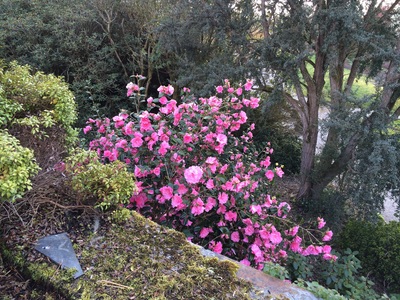

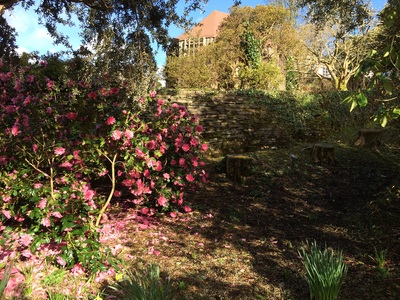
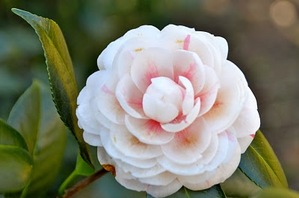
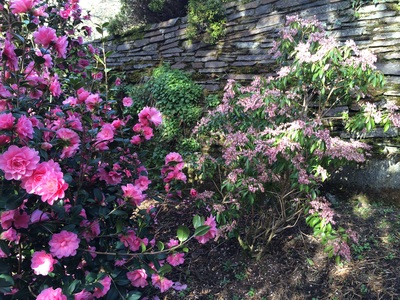
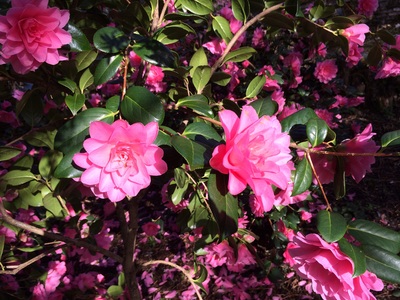
 RSS Feed
RSS Feed
